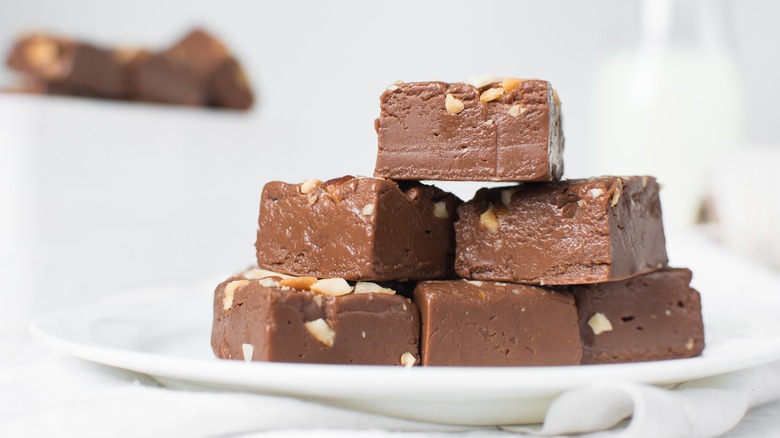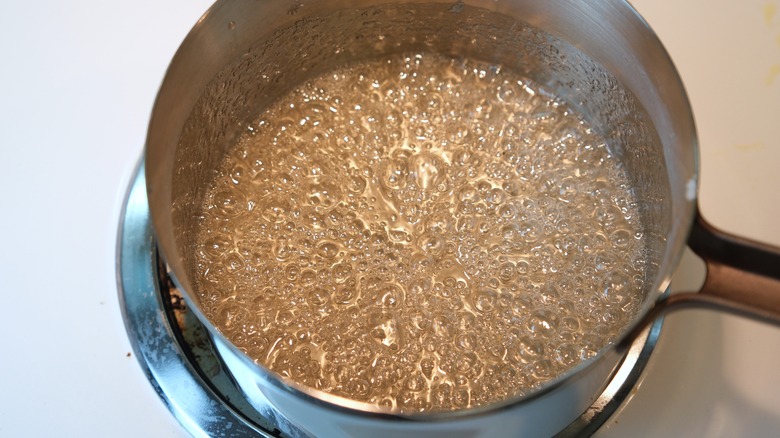What Causes Grainy Fudge And How To Fix It
Making fudge looks simple enough, but this seemingly straightforward process can unfortunately have a few pitfalls that result in a less than luxurious final product, with nothing quite as disappointing as grainy fudge.
The good news is that this unwanted texture is easy to avoid when honing in on the crystalized sugars that make up fudge. The sweet treat is technically a type of sugar candy, and heating the mixture until it is somewhere between 234 and 239 degrees Fahrenheit — the soft ball stage — changes the texture of the confection in a desirable way.
When making fudge, you are actually creating very tiny sugar crystals that feel velvety on the palate. The issue arises when large crystals form, which in essence create that grainy texture. This can happen from stirring the sugar mixture after it starts to boil, or from stirring it once it is already starting to cool.
Even if you do end up with a sandy treat, there is still hope for fixing it without wasting any ingredients. Just dump your fudge back into the pot along with a cup or so of water, and put it over very low heat until it's all melted and homogenous. Then, heat the mix to whichever temperature is specified in your recipe, and give it another go. The addition of water will dull the flavor somewhat, so you might want to add some extra vanilla extract or finish off the fudge with flavorful toppings, like that stash of leftover Halloween candy.
More tips for avoiding grainy fudge
There are some ways to avoid the grainy texture of fudge as you prepare the treat. First, make sure to use a heavy bottomed pan to lessen the risk of scorching. And, while you can stir to dissolve the sugar while the mixture is warming up, once it starts to boil, do not stir. Instead, swirl the pan, and use a water-dampened pastry brush to remove any sugar that has crystalized on the sides of the pan. You may also want to use a candy thermometer for accuracy — it should read 212 degrees Fahrenheit for the rolling boil you'll want to use.
Once you remove the pot from the burner, you'll also want to let the milky sugar syrup cool without stirring before incorporating the chocolate. If you are following a recipe that calls for beating the chocolate mixture until it's thick and matte-toned, do not start this step until it cools to about 110 degrees Fahrenheit. Otherwise, transfer the fudge to a lined or greased pan, and let it cool to room temperature on the countertop before transferring it to the fridge.
If this all sounds like too much fuss, Alton Brown makes this indulgent dessert in the microwave, so you can always try a different fudge method instead.


